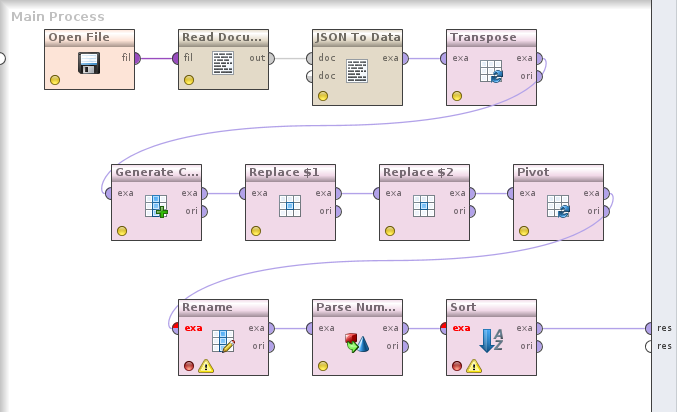(English version)
Komplexe Lösungen bestehen häufig aus mehr als einer Datenbank, manchmal sogar unterschiedlichen Typs. Im Fall von Sco2t haben wir eine „geerbte“ MySQL-Datenbank, während neue Daten wegen der erweiterten GIS-Funktionalität in PostgreSQL liegen. Natürlich müssen gewisse Daten zwischen beiden Systemen synchronisiert werden.
Pentaho Data Integration ist dafür eine sehr gute Lösung und wird auch intensiv verwendet. Allerdings möchte ich in einigen Fällen sofort auf Änderungen reagieren und nicht erst eine Minute später. (Und auch nicht ständig Java-Prozesse starten, die die meiste Zeit keine Änderungen finden.) Dafür bieten sich PostgreSQL-seitig Trigger an, die Änderungen an einer Tabelle in der MySQL-Datenbank nachvollziehen.
PostgreSQL 9.1 hat die erste Version der Foreign Data Wrappers genannten Funktionalität bekommen, seit 9.3 können diese sogar in fremde Datenbanken schreiben. Ein FDW-Modul für den Zugriff auf andere PostgreSQL-Server ist in 9.4 im PostgreSQL-Contrib-Bereich dabei, Module für viele andere Datenbanken (auch NoSQL und Hadoop!) sind verfügbar.
(Linked Server sind schon seit Längerem in vielen Datenbanksystemen verfügbar, PostgreSQL hatte dafür „dblink“. Diese Funktionalität hat sich aber großteils auf Verbindungen zum eigenen Datenbanktyp beschränkt.)
EnterpriseDB hat ein FDW-Modul für MySQL realisiert. Derzeit muß man es selbst kompilieren, da in den üblichen Repositories keine fertigen Pakete enthalten sind. Das ist aber nicht schwierig.
Installation auf einem Debian-System:
git clone https://github.com/EnterpriseDB/mysql_fdw.git apt-get install make gcc libmysqlclient-dev postgresql-server-dev-9.4 cd mysql_fdw make USE_PGXS=1 make USE_PGXS=1 install
Damit ist das Modul übersetzt und als PostgreSQL-Extension installiert. Der Rest passiert als PostgreSQL-User mit Superuser-Rechten in SQL:
CREATE EXTENSION mysql_fdw; CREATE SERVER mysql_server FOREIGN DATA WRAPPER mysql_fdw OPTIONS (host '127.0.0.1', port '3306'); CREATE USER MAPPING FOR username SERVER mysql_server OPTIONS (username 'myuser', password 'mypassword'); CREATE FOREIGN TABLE mysqltabelle ( -- Felder aus der MySQL-Tabelle mit ihrem Datentyp ) SERVER mysql_server OPTIONS (dbname='datenbankname', table_name='OriginalTabelleName');
Damit ist die Fremdtabelle „mysqltabelle“ in der PostgreSQL-Datenbank angelegt und kann wie eine normale Tabelle angesprochen, gelesen und beschrieben werden.
CREATE EXTENSION registriert das Modul in der aktuellen Datenbank. (Verwendet man mehrere Datenbanken auf einem Server, muß CREATE EXTENSION in jeder, die die Funktionalität braucht, ausgeführt werden.)
CREATE SERVER erzeugt die Verbindung zum fremden Datenbankserver und gibt die Verbindungsparameter an.
CREATE USER MAPPING ist notwendig, um PostgreSQL-seitige User mit einem User in der fremden Datenbank zu verknüpfen. Es können mehrere Mappings für unterschiedliche User angelegt werden.
CREATE FOREIGN TABLE definiert dann die Fremdtabelle und gibt ihren Namen in der fremden Datenbank an. Die Datentypen der Felder müssen in PostgreSQL existieren. Es ist möglich, Constraints wie NOT NULL oder Default-Werte schon PostgreSQL-seitig anzugeben.
Foreign Tables eröffnen ganz neue Möglichkeiten der Datenintegration: Daten müssen nicht mehr hin und her kopiert werden, stattdessen sind sie in der Master-Datenbank und die anderen Datenbanken arbeiten immer mit der aktuellen Kopie. Datenübernahmeprozesse können direkt in der Datenbank, ohne Zwischenschaltung einer ETL-Software ausgeführt werden. Ich bin gespannt, welche Anwendungsmöglichkeiten mir noch einfallen.
Accessing foreign databases in PostgreSQL
Many complex solutions use more than one database, sometimes even different database systems. At Sco2t we „inherited“ a MySQL database, but new data are stored in PostgreSQL because of the better GIS functionality. So some data need to be kept in sync between the two systems.
Pentaho Data Integration is a great solution for this and it’s already in heavy use. In some situations, however, I’d like to react to changes instantly instead of waiting a minute. (Also, I dont’t want to start Java processes frequently that don’t have to process any changes most of the time.) In PostgreSQL, we can use triggers for updating data in other tables, now even in the MySQL database.
PostgreSQL 9.1 was the first release with Foreign Data Wrappers functionality. With 9.3, even writing into foreign databases is supported. In 9.4 there is a FDW module for accessing other PostgreSQL servers in the Contrib area. Modules for accessing other database types (even NoSQL and Hadoop!) available.
(Linked server functionality has been available in many database systems for a long time. PostgreSQL had „dblink“. However, linked servers usually had to be of the same type.)
There is a FDW module for MySQL from EnterpriseDB. Currently we need to compile it ourselves, as there are no binary packages in the usual repositories. But it’s not hard.
This is the installation on a Debian system:
git clone https://github.com/EnterpriseDB/mysql_fdw.git apt-get install make gcc libmysqlclient-dev postgresql-server-dev-9.4 cd mysql_fdw make USE_PGXS=1 make USE_PGXS=1 install
After this, the module is compiled and registered as a PostgreSQL extension. The rest of the procedure has to be executed (with database superuser rights) in SQL:
CREATE EXTENSION mysql_fdw; CREATE SERVER mysql_server FOREIGN DATA WRAPPER mysql_fdw OPTIONS (host '127.0.0.1', port '3306'); CREATE USER MAPPING FOR username SERVER mysql_server OPTIONS (username 'myuser', password 'mypassword'); CREATE FOREIGN TABLE mysqltable ( -- Fields of the MySQL table, including their type ) SERVER mysql_server OPTIONS (dbname='databasename', table_name='OriginalTableName');
The result of this script is a foreign table „mysqltable“ in the PostgreSQL database. This table can be used like any normal table, you can read and write it.
CREATE EXTENSION registers the compiled module in the current database. (When using multiple databases on a server, CREATE EXTENSION must be executed in each database that will contain foreign tables.)
CREATE SERVER creates the link to the foreign database server and defines connection parameters.
CREATE USER MAPPING is necessary to link a PostgreSQL user to a user in the foreign database. Multiple mappings can be created for different users.
CREATE FOREIGN TABLE defines the foreign table and its name in the foreign database. The field types must exist in PostgreSQL. It is possible to define constraints like NOT NULL or give default values on the PostgreSQL side.
Foreign tables open entire new worlds of possibilities for data integration. Master data don’t need to be copied to multiple databases: other databases can work directly on the original which is always current. Data integration processes run in the database, without a separate ETL software. It’ll be interesting to explore further ideas and usage scenarios.

